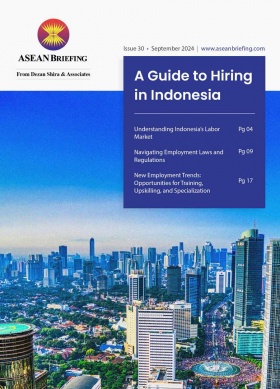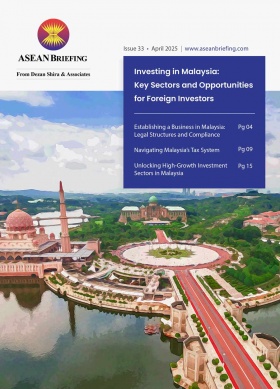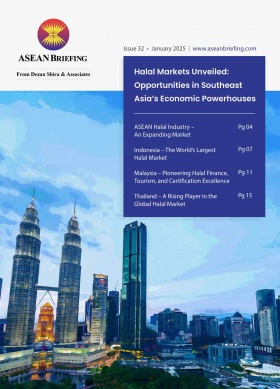Cambodia’s Special Economic Zones: A Guide for Foreign Investors
Cambodia has steadily positioned itself as a prime investment destination in Southeast Asia, attracting foreign direct investment (FDI) across multiple sectors. In 2023, the country recorded FDI inflows of US$2.7 billion, with key contributors including China, Japan, Thailand, and South Korea. A significant portion of this investment is directed towards Cambodia’s Special Economic Zones (SEZs), which serve as hubs for manufacturing, trade, and logistics. SEZs are instrumental in the country’s economic strategy, facilitating job creation, industrial diversification, and international trade.
As of the first semester of 2024, Cambodia has 26 operational SEZs, with four new zones launched in the same year, bringing the total to 30. The total export value from Cambodia’s SEZs exceeded US$5 billion in 2024, further emphasizing their importance in the national economy.
Key SEZs and their strategic importance
Phnom Penh SEZ
As one of Cambodia’s most established economic zones, Phnom Penh SEZ spans approximately 357 hectares. It is home to 114 companies, including 85 manufacturing firms and 29 non-manufacturing enterprises. The zone employs over 43,000 workers, with major investments from Japan, China, and Thailand. Key industries in Phnom Penh SEZ include electronics, automotive components, and fashion jewelry. Major investors in this SEZ include Japanese firms specializing in precision engineering, Chinese automotive component manufacturers, and Thai textile companies.
Sihanoukville SEZ
Situated near Cambodia’s largest port, Sihanoukville SEZ is a key hub for trade and export-driven industries. Covering 1,113 hectares, it hosts 188 enterprises and employs more than 30,000 workers. With a capacity for up to 300 enterprises, Sihanoukville SEZ attracts investment primarily from China and Japan. Notable investors include large Chinese electronics manufacturers, logistics firms, and Japanese industrial suppliers. The zone benefits from direct port access, making it a strategic choice for logistics and manufacturing companies.
Bavet SEZs
Located near the Vietnamese border, the Bavet SEZs—Tai Seng Bavet SEZ and Manhattan SEZ—play a critical role in cross-border trade. Tai Seng Bavet SEZ covers 99 hectares and houses 11 companies, while Manhattan SEZ spans 157 hectares with 18 companies.
Investment incentives in Cambodian SEZs
Cambodia’s SEZs offer attractive investment incentives designed to enhance profitability and business viability. Key benefits include tax holidays of up to nine years, import duty exemptions on raw materials and equipment, and VAT incentives. Companies operating within SEZs enjoy reduced profit tax rates compared to non-SEZ investments. These incentives make Cambodia a competitive alternative to other regional manufacturing hubs, including Vietnam and Thailand.
Application process for SEZ investment
Investing in a Cambodian SEZ involves a structured process that ensures compliance with local regulations and eligibility for incentives. Below is the step-by-step procedure for obtaining approval:
- Determine Eligibility – Investors must ensure their business activity aligns with Cambodia’s SEZ investment criteria and sector-specific regulations.
- Select a Suitable SEZ – Choose an SEZ based on industry focus, location advantages, and infrastructure availability.
- Prepare Investment Proposal – Submit a comprehensive investment plan outlining business objectives, financial projections, and operational details.
- Register with the SEZ Authority – File an official investment application with the Council for the Development of Cambodia (CDC) or the respective SEZ governing body.
- Obtain Licenses and Permits – Secure the necessary business registration, investment license, and operational permits from relevant government agencies.
- Sign Land Lease Agreement – If land or facilities within the SEZ are required, negotiate and finalize lease terms with the SEZ operator.
- Comply with Environmental and Labor Regulations – Ensure adherence to Cambodia’s environmental impact assessments and labor laws before commencing operations.
- Begin Operations – Once approvals and infrastructure setup are completed, businesses can commence production or service activities within the SEZ.
- Ongoing Compliance and Reporting – Maintain regulatory compliance, tax reporting, and annual filings as required by Cambodian authorities.
On average, SEZ applications take between three to six months to process. Investors may encounter challenges such as bureaucratic delays, which can be mitigated through legal and consulting assistance.
Land and infrastructure considerations
SEZs in Cambodia offer long-term land lease arrangements, with costs varying depending on location and development level.
Many SEZs provide ready-built industrial facilities, reducing initial capital expenditure for investors. Environmental compliance remains an important consideration, with regulations requiring sustainable waste management and energy-efficient practices.
Workforce availability and labor considerations
Cambodia’s SEZs benefit from a growing labor pool with competitive wage levels compared to neighboring countries. The manufacturing sector, particularly textiles, electronics, and automotive parts, is the largest employer within SEZs.
Training programs are available to enhance workforce skills, but foreign investors may face recruitment challenges due to competition for skilled labor. Compliance with Cambodia’s labor laws, including working conditions and employee benefits, is essential for smooth operations.
Role of one-stop service centers in SEZs
To streamline business operations, Cambodia’s SEZs operate one-stop service centers that provide administrative support, including permit processing, customs clearance, and business registration. These centers facilitate interaction with government agencies, expediting approvals and reducing bureaucratic inefficiencies. However, investors should be aware that processing times can vary, and it is advisable to engage legal and consulting experts to navigate administrative requirements effectively.
Sector-specific investment opportunities
Cambodia’s SEZs present opportunities across various industries. The manufacturing sector leads investment inflows, accounting for 69 percent of total approved capital in 2024. Key industries include textiles and garments, electronics, automotive components, and agribusiness.
The country is also expanding into emerging sectors, such as renewable energy and logistics, offering new avenues for foreign investors. The SEZ framework supports industrial diversification, moving beyond traditional garment manufacturing towards high-value production sectors.
Challenges and risks for investors
While Cambodia’s SEZs provide numerous advantages, investors must navigate certain challenges. Infrastructure limitations, particularly in power reliability and road networks, can affect operational efficiency. Administrative hurdles and bureaucratic delays remain common, requiring proactive engagement with SEZ authorities. Corruption risk is another factor, making do diligence and compliance monitoring essential. Additionally, Cambodia faces competition from regional SEZs in Vietnam and Thailand, where incentives and infrastructure are more developed.
Regional integration and market access
Cambodia’s participation in regional trade agreements enhances the appeal of its SEZs. The ASEAN Economic Community (AEC) framework provides duty-free access to key markets in Southeast Asia. The country’s integration into the Regional Comprehensive Economic Partnership (RCEP) further strengthens its role in global supply chains. These agreements position Cambodia’s SEZs as attractive bases for export-driven industries targeting regional and international markets.
About Us
ASEAN Briefing is one of five regional publications under the Asia Briefing brand. It is supported by Dezan Shira & Associates, a pan-Asia, multi-disciplinary professional services firm that assists foreign investors throughout Asia, including through offices in Jakarta, Indonesia; Singapore; Hanoi, Ho Chi Minh City, and Da Nang in Vietnam; besides our practices in China, Hong Kong SAR, India, Italy, Germany, and USA. We also have partner firms in Malaysia, Bangladesh, the Philippines, Thailand, and Australia.
Please contact us at asean@dezshira.com or visit our website at www.dezshira.com and for a complimentary subscription to ASEAN Briefing’s content products, please click here.
- Previous Article Thailand’s Land Ownership Rules for Foreigners: A Comprehensive Guide
- Next Article 东盟对美国关税政策的回应:构建统一的区域战略







